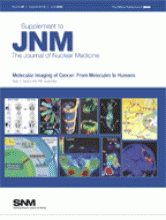Abstract
In this review we examine the mechanisms (causes) underlying the increased glucose consumption observed in tumors within a teleological context (consequences). In other words, we will ask not only “How do cancers have high glycolysis?” but also, “Why?” We believe that the insights gained from answering the latter question support the conclusion that elevated glucose consumption is a necessary component of carcinogenesis. Specifically we propose that glycolysis is elevated because it produces acid, which provides an evolutionary advantage to cancer cells vis-à-vis normal parenchyma into which they invade.
Footnotes
-
COPYRIGHT © 2008 by the Society of Nuclear Medicine, Inc.







